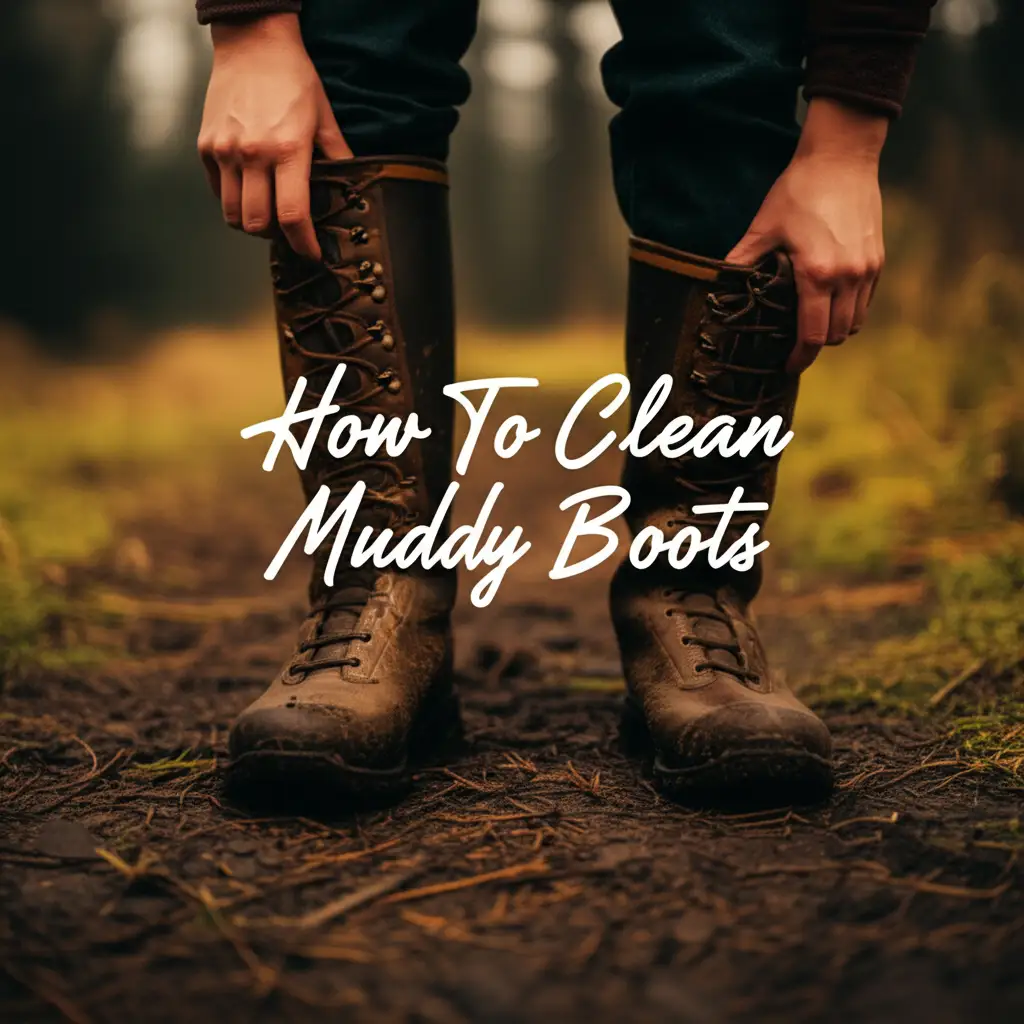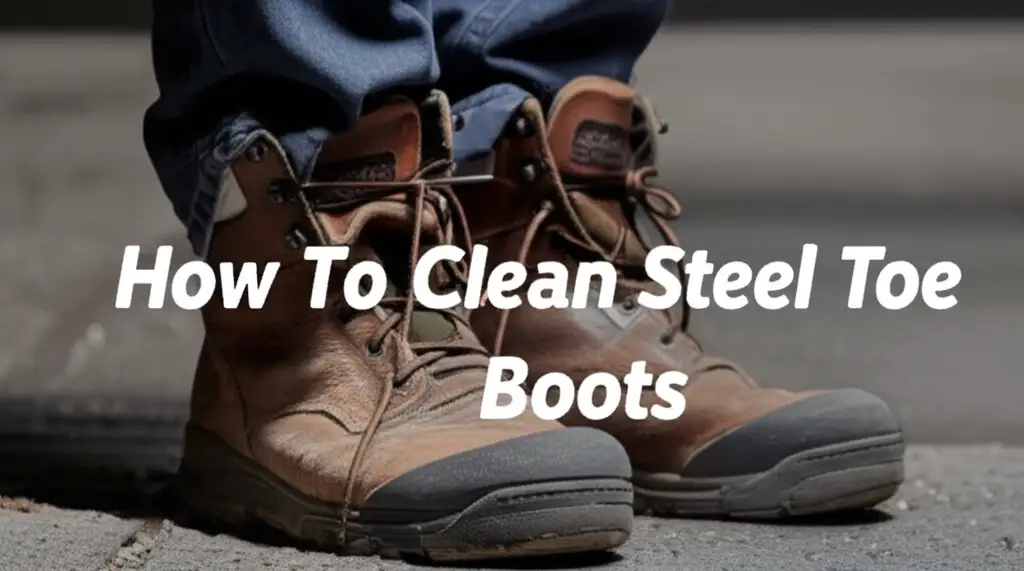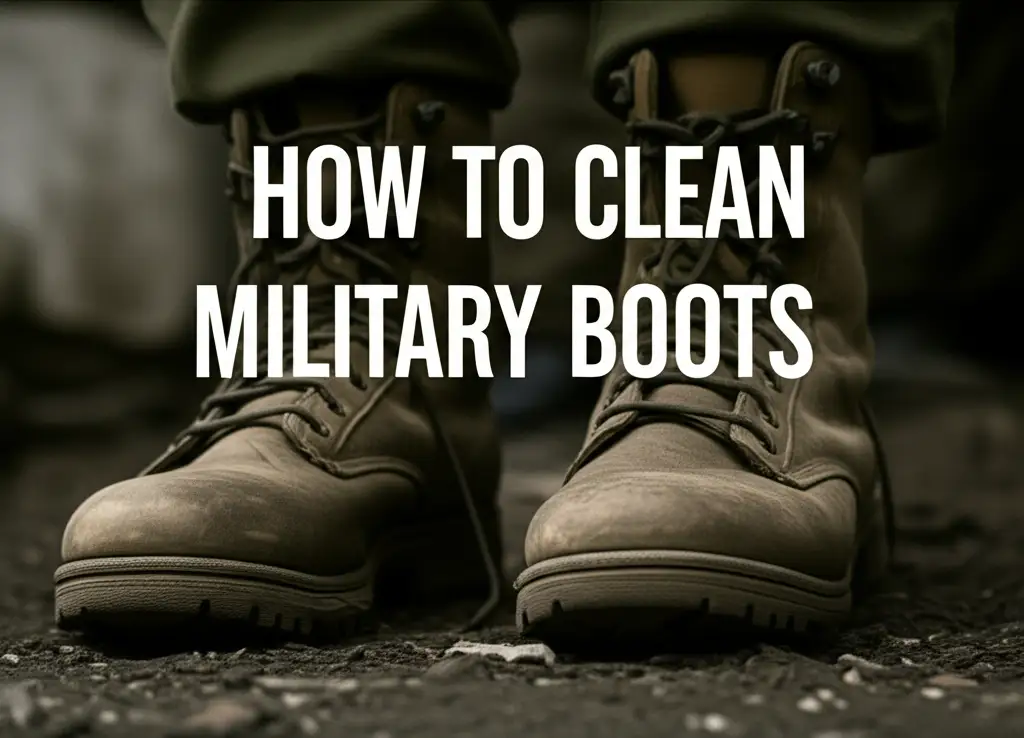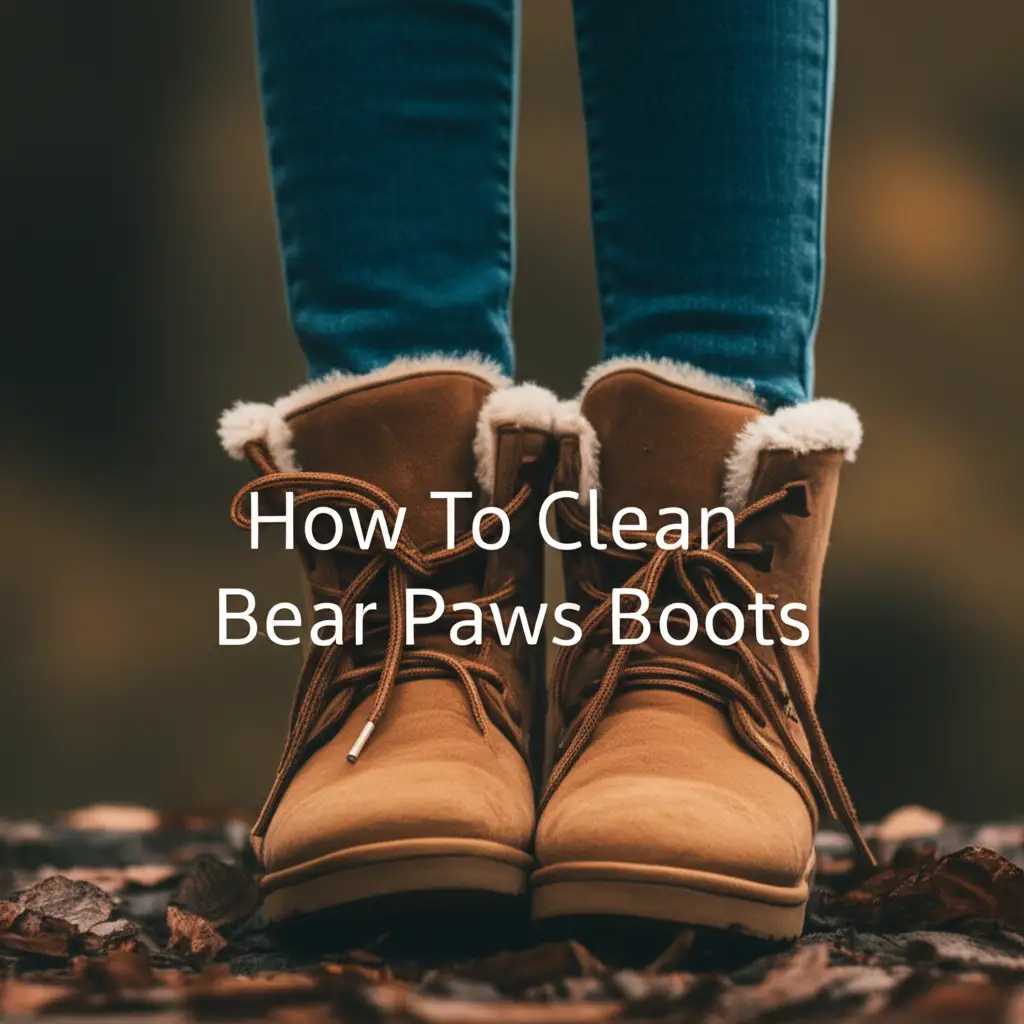· Footwear Care · 17 min read
How To Clean Hunter Boots
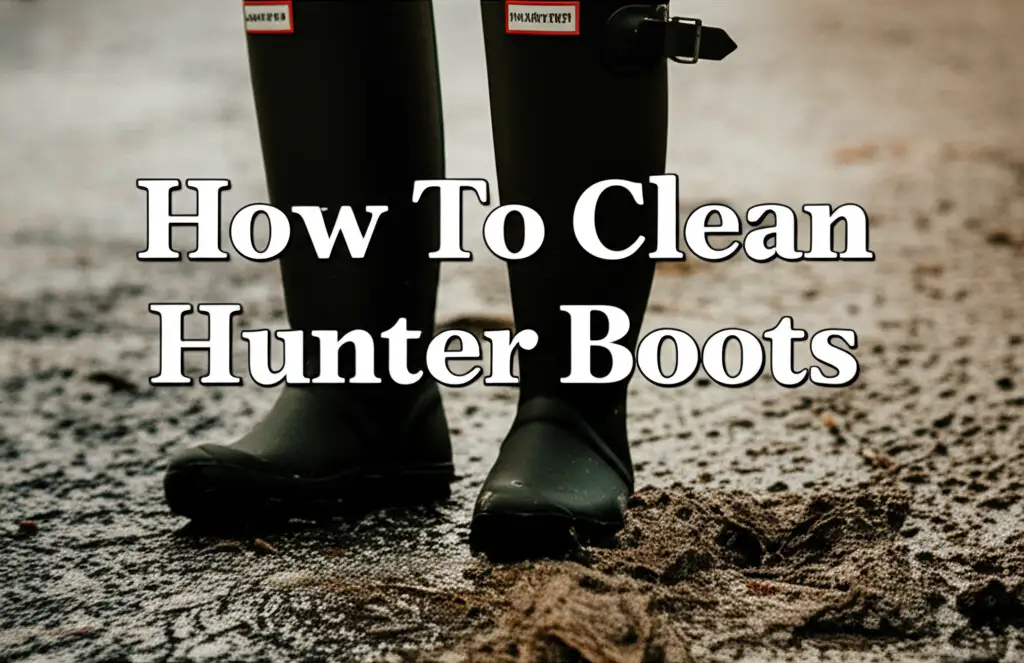
Keep Your Hunter Boots Spotless: A Cleaning Guide
Hunter boots are a classic. They are stylish and built to last. Many people rely on them for rainy days, garden work, or festivals. Over time, these boots can collect dirt, mud, and even a white, powdery film known as “bloom.” This article shows you how to clean Hunter boots, helping you keep them looking their best.
I often get questions about Hunter boot care. My goal here is simple: to give you a clear guide. You will learn the correct methods and products. This helps maintain your boots’ original shine and extends their lifespan. We will cover routine cleaning, bloom removal, drying steps, and proper storage.
Takeaway
- Regularly clean Hunter boots with mild soap and water.
- Address mud and dirt immediately for best results.
- Remove white “bloom” using a specialized product or olive oil.
- Always air dry boots completely away from direct heat.
- Store boots upright in a cool, dry place to prevent damage.
How To Clean Hunter Boots: Quick Answer
To clean Hunter boots, first rinse off loose dirt with water. Then, wipe them down using a soft cloth and a solution of mild soap and water. Rinse the boots thoroughly, and allow them to air dry completely. For bloom, use a silicone-based boot buffer or a small amount of olive oil.
Gather Your Supplies for Hunter Boot Cleaning
Before you start cleaning your Hunter boots, you need the right tools. Using correct items makes the cleaning process easier. It also protects your boots from damage. I always make sure I have everything ready before I begin. This saves time and ensures good results.
Proper supplies are key for effective boot care. You do not need many special items. Most of the things you need are likely already in your home. Some specific products exist for Hunter boots. These products can offer better results for certain issues like bloom.
Essential Cleaning Tools
You will need a few basic tools. These tools help you clean every part of your boot. A soft cloth is very important. Sponges work well too.
- Soft cloth or sponge: This helps apply cleaning solutions gently. It will not scratch the rubber surface.
- Soft-bristled brush (optional): A brush can help remove stubborn dirt. Use it gently on the rubber.
- Bucket or basin: This holds your cleaning solution. It is also useful for rinsing.
- Running water: A hose or faucet is necessary for rinsing.
Recommended Cleaning Solutions
Choosing the right cleaning solution is important. You want something effective but gentle. Harsh chemicals can damage the rubber. I always recommend mild options.
- Mild dish soap: A few drops in water are enough. This removes dirt and grime effectively.
- Hunter Boot Cleaner or Rubber Boot Buffer: These products are made specifically for Hunter boots. They clean and condition the rubber.
- Olive oil (for bloom): A small amount can help restore shine and remove bloom.
- Silicone spray (for bloom): This can also help remove bloom and protect the rubber.
Having these supplies ready helps you tackle any cleaning task. You will be prepared for general dirt or that white bloom. This preparation helps ensure your boots stay in top condition.
Step-by-Step Guide to Cleaning Mud and Dirt Off Hunter Boots
Hunter boots are great for wet, muddy conditions. They protect your feet well. But, they can get very dirty. Cleaning mud and dirt promptly keeps your boots looking good. It also prevents dirt from drying and becoming harder to remove. I always clean my boots soon after using them in mud.
This section gives you clear steps to clean off everyday dirt. We will start with the easiest part. Then, we will move to more stubborn grime. This approach ensures you get a thorough clean without damaging the rubber. This is a simple process anyone can follow.
Removing Surface Grime
Start with the easiest dirt first. This helps you see where more work is needed. This step is quick and prevents a big mess later.
- Rinse off loose mud: Take your boots outside. Use a hose or faucet to spray off loose mud and dirt. Do this over a drain or grassy area. Aim for the sole and the lower parts of the boot.
- Wipe down with a damp cloth: Once the heavy mud is gone, dampen a soft cloth. Wipe down the entire surface of the boots. This removes remaining surface dust and light grime.
Tackling Stubborn Stains
Some dirt sticks more than others. You might find dried mud or scuff marks. These need a bit more attention. Do not scrub too hard, as this can harm the rubber.
- Prepare a cleaning solution: Fill a bucket with lukewarm water. Add a few drops of mild dish soap. Stir it to create a soapy solution.
- Clean with a soft cloth: Dip your soft cloth or sponge into the soapy water. Wring out excess water. Wipe down the entire boot surface. Focus on any dirty areas or stains. For boots that are truly covered in grime, you might find more general advice in our guide on how to clean muddy boots.
- Use a soft brush for tough spots: If dirt is stuck in the sole’s grooves, use a soft-bristled brush. Gently scrub these areas. Avoid using stiff brushes on the main rubber.
- Check the inside top: Sometimes, dirt gets inside the top rim. Wipe this area with your damp, soapy cloth too.
After these steps, your boots should look much cleaner. The next step will focus on any white film that might appear. This process keeps your Hunter boots ready for your next adventure.
Understanding and Removing Hunter Boot Bloom
Hunter boots are made of natural rubber. Natural rubber can sometimes develop a white, powdery film. This film is called “bloom.” It is a completely normal part of the rubber aging process. It does not mean your boots are damaged or defective. I know many people worry when they first see it.
Bloom happens when insoluble particles rise to the surface of the rubber. This process is similar to how chocolate can develop a white film. It is purely cosmetic. But, it can make your boots look dull. Removing bloom helps restore their original look.
What Causes Rubber Bloom?
Bloom is a sign of high-quality, natural rubber. It happens because of how rubber is made. Here are the key causes:
- Natural oils rising: Rubber contains oils and waxes. These can rise to the surface over time. This happens especially when boots are stored in certain conditions.
- Temperature changes: Storing boots in fluctuating temperatures can make bloom more likely.
- Humidity levels: High humidity can also contribute to bloom formation.
- Sunlight exposure: Direct sunlight can speed up the blooming process.
Understanding this helps you realize it is not a flaw. It is a characteristic of natural rubber.
Effective Bloom Removal Methods
You can easily remove bloom from your Hunter boots. Several methods work well. I have tried a few of them myself. The goal is to restore the rubber’s deep color and shine.
Hunter Boot Buffer: Hunter makes a specific product for this. It is a silicone-based spray or wipe.
- Application: Spray or wipe the buffer onto the clean, dry boot.
- Buffing: Use a clean, soft cloth to buff the product into the rubber. Work in small sections.
- Result: This product quickly restores the boots’ original finish.
Olive Oil: A common household item can work too. This is a good option if you do not have a specialized product.
- Application: Put a very small amount of olive oil on a soft cloth.
- Wiping: Gently wipe the bloom off the boot surface.
- Buffing: Continue buffing until the white film disappears. The boot should look shiny again. Use only a tiny bit to avoid making the boots greasy.
Silicone Spray (General Purpose): Similar to the Hunter buffer, a general silicone spray can help.
- Caution: Ensure the spray is safe for rubber. Test a small, hidden area first.
- Application: Spray a small amount onto a cloth, not directly onto the boot.
- Wiping and Buffing: Wipe and buff the boot surface until the bloom is gone.
Removing bloom makes a big difference in how your Hunter boots look. It brings back their rich color. This simple step keeps your boots presentable.
Proper Rinsing and Drying Techniques for Hunter Boots
After cleaning your Hunter boots, rinsing is critical. Any leftover soap residue can dull the rubber. It can also attract new dirt. Proper rinsing ensures your boots are truly clean. Then, drying them correctly protects the rubber. It also prevents issues like mold or odor. I always make sure my boots are completely dry before putting them away.
Incorrect drying can harm the rubber. It can cause cracking or fading. It can also lead to unpleasant smells inside the boots. This section will guide you through the best rinsing and drying practices.
Rinsing Without Damage
You want to remove all soap. But you also want to protect the rubber. Use gentle water pressure for rinsing.
- Rinse thoroughly: Use clean, running water to rinse the entire boot. Make sure all soap is gone. Pay special attention to seams and crevices. Soap can hide in these spots.
- Check for residue: Run your hand over the boot. It should feel smooth and clean. There should be no slippery or sticky spots from soap. If you feel any, rinse again.
Air Drying for Longevity
Drying is often overlooked. But it is one of the most important steps. It prevents water damage and odors.
- Wipe away excess water: Use a clean, dry cloth to wipe off as much surface water as possible. This speeds up the drying process.
- Air dry naturally: Stand your boots upright. Place them in a well-ventilated area. A cool, dry room is ideal. Keep them away from direct sunlight. Direct sunlight can cause fading and cracking.
- Avoid heat sources: Never use a hairdryer, radiator, or direct heat to dry your boots. High heat can damage the rubber. It can make it stiff or brittle.
- Allow full drying: Give your boots ample time to dry. This can take several hours, or even overnight. Make sure the inside of the boot is also dry. You can stuff them lightly with newspaper to absorb moisture inside. Do not overstuff them, as this can misshape the boots.
Following these rinsing and drying steps is simple. It makes a big difference in your boots’ lifespan. Proper care helps your Hunter boots last for many seasons.
Interior Cleaning for Fresh Hunter Boots
While the outside of your Hunter boots gets the most attention, the inside can also need cleaning. Boots can collect sweat, dirt, and odors over time. This makes them less pleasant to wear. Cleaning the interior improves hygiene. It also keeps your feet feeling fresh. I always check the inside of my boots after a long day.
Ignoring the inside can lead to unpleasant smells. It can also foster bacteria growth. A clean interior adds to the overall comfort and life of your boots. This section covers simple ways to refresh the inside of your Hunter boots.
Refreshing the Interior
Cleaning the inside is different from cleaning the outside. You cannot just hose it down. Gentle methods are best to avoid damaging the lining.
- Remove insoles (if applicable): Some Hunter boots have removable insoles. If yours do, take them out. Clean them separately. You can hand wash them with mild soap and water. Then, let them air dry completely.
- Wipe down the lining: Dampen a clean cloth with a solution of mild soap and water. Wring it out very well. Wipe the inside lining of the boot. Focus on the footbed and ankle areas. Do not soak the lining.
- Use a deodorizing spray: After wiping, you can use a shoe deodorizing spray. Look for one designed for fabric or footwear. Spray it lightly inside the boots. This helps neutralize odors.
- Baking soda for odor absorption: If odors are strong, sprinkle a tablespoon of baking soda inside each boot. Let it sit overnight. Baking soda absorbs smells. Pour it out in the morning.
Preventing Future Odors
Prevention is always better than cure. A few habits can keep the inside of your Hunter boots fresh.
- Wear socks: Always wear socks with your Hunter boots. Socks absorb sweat. This keeps the boot lining cleaner.
- Air out after use: After each wear, let your boots air out. Do not put them straight back into a dark closet. Allow air to circulate inside.
- Store in a dry place: Store boots in a cool, dry area. Avoid damp basements or closets. Moisture can lead to mold and mildew. This can cause persistent odors.
By giving the inside of your boots a little attention, you ensure they stay comfortable and fresh. This adds to the overall enjoyment of your Hunter boots.
Protecting and Storing Hunter Boots
Cleaning your Hunter boots is only one part of their care. Protecting them after cleaning is just as important. Proper storage helps maintain their shape and prevent damage. This also reduces the chance of bloom appearing. I always think about where I put my boots after cleaning them.
Good protection and storage habits make your cleaning efforts last longer. They also extend the life of your boots. This section provides tips on how to keep your Hunter boots in top condition between uses.
Everyday Care Tips
Small actions can make a big difference. Incorporate these into your routine:
- Quick wipe after each use: If your boots get slightly dirty, give them a quick wipe with a damp cloth. This prevents dirt from building up.
- Apply a rubber conditioner: Periodically, use a rubber boot conditioner or Hunter Boot Shine. This keeps the rubber supple. It also helps prevent cracking. This is especially good if you clean other types of footwear, like how we discuss caring for Blundstone boots or even specialized footwear like military boots. Different materials need different care, but general protection is key for all boots.
- Avoid sharp objects: Be careful around sharp edges or thorns. Punctures can be hard to repair.
Ideal Storage Conditions
How you store your boots matters. Bad storage can lead to creases, bloom, and even mold.
- Store upright: The best way to store Hunter boots is standing upright. This maintains their shaft shape. Hunter sells boot trees or stands for this purpose. You can also use rolled-up newspapers or pool noodles inside the shaft. This support is crucial for many types of boots, whether it is for cowboy boots or even heavy-duty steel toe boots.
- Cool, dry place: Choose a storage spot that is cool and dry. Avoid direct sunlight. Sunlight can fade the rubber and speed up bloom. High heat can also damage the rubber.
- Avoid folding or creasing: Never fold your Hunter boots. This causes permanent creases in the rubber. These creases can eventually crack.
- Use original box (optional): If you still have the original Hunter boot box, it can be a good storage option. It protects against dust and light. This is similar to how you might protect other specialty footwear like Bearpaw boots by keeping them safe from environmental factors.
By following these protection and storage tips, your Hunter boots will stay in excellent condition. They will look great and last for many years of wear.
Common Hunter Boot Cleaning Mistakes to Avoid
When cleaning Hunter boots, it is easy to make mistakes. These mistakes can harm the rubber. They can also shorten your boots’ life. I have seen many people unknowingly damage their boots. Avoiding these common errors keeps your Hunter boots looking good for longer.
Knowing what not to do is as important as knowing what to do. This section highlights the main pitfalls. It helps you protect your investment. Hunter boots are an investment. Proper care keeps them ready for any weather.
Harsh Chemicals and Abrasive Tools
Using the wrong cleaning agents or tools can cause irreversible damage.
- Do not use harsh detergents: Avoid bleach, solvents, or strong cleaning chemicals. These can strip the natural oils from the rubber. This leads to dryness, cracking, and discoloration. Stick to mild soap.
- Avoid abrasive scrubbers: Do not use steel wool, abrasive sponges, or stiff brushes on the rubber. These can scratch the surface. Scratches make the boots look worn. They can also make bloom appear worse.
- No oil-based polishes (unless for bloom): Unless you are treating bloom with a specific product or olive oil, do not use general oil-based polishes. Some polishes contain petroleum. This can break down rubber.
Improper Drying and Storage
How you dry and store your boots affects their longevity significantly.
- Do not use direct heat: Never put your boots near radiators, fireplaces, or use a hairdryer. High heat dries out the rubber too quickly. This causes it to crack and become brittle. Air drying is always the best method.
- Avoid direct sunlight for drying or storage: Sunlight’s UV rays can degrade rubber. It causes fading and can accelerate bloom. Always dry and store boots in a shaded area.
- Do not store folded or crumpled: Folding or crumpling your boots creates permanent creases. These creases weaken the rubber over time. They can lead to tears or cracks. Always store them upright.
- Avoid damp or humid environments: Storing boots in a damp basement or closet can lead to mold and mildew. These can smell bad and damage the rubber. A dry, well-ventilated space is ideal.
By being mindful of these common mistakes, you ensure your Hunter boots receive the best care. This careful approach helps them remain a stylish and functional part of your wardrobe for many years.
Frequently Asked Questions
Hunter boots are popular. Many people have similar questions about their care. Here are some common queries and their answers.
How often should I clean my Hunter boots?
You should clean your Hunter boots after each use if they get muddy or heavily soiled. For general dust or light dirt, a quick wipe-down every few weeks is good. Regular light cleaning prevents dirt buildup and helps maintain the rubber’s condition. This keeps them looking fresh.
Can I use dish soap to clean Hunter boots?
Yes, you can use mild dish soap to clean Hunter boots. Mix a few drops of mild dish soap with lukewarm water. Use this solution with a soft cloth to wipe down your boots. Always rinse thoroughly afterward to remove all soap residue. Mild soap is safe for the rubber.
Is Hunter boot bloom harmful?
No, Hunter boot bloom is not harmful to your boots or to you. Bloom is a natural process where waxes and oils rise to the surface of the natural rubber. It is a sign of high-quality rubber. It is only a cosmetic issue. It does not affect the performance or durability of your boots.
How do I prevent bloom on my Hunter boots?
You can prevent or reduce bloom by storing your boots properly. Keep them in a cool, dry place, away from direct sunlight or extreme temperature changes. Regular cleaning and applying a rubber boot buffer or silicone spray can also help maintain the rubber’s surface and prevent bloom.
Can I put my Hunter boots in the washing machine?
No, you should never put your Hunter boots in a washing machine. The washing machine’s agitation and heat can seriously damage the natural rubber. It can cause cracking, shrinking, or permanent loss of shape. Always hand wash your Hunter boots with mild soap and water.
What is the best product for Hunter boot shine?
The best product for Hunter boot shine is typically the official Hunter Boot Buffer or Hunter Boot Shine. These products are designed specifically for Hunter’s natural rubber. They clean, restore shine, and help remove bloom. Alternatively, a small amount of olive oil can also provide a good shine.
Conclusion
Hunter boots are a great choice for various conditions. They are known for their style and durability. Learning how to clean Hunter boots properly is simple but important. It extends their life and keeps them looking sharp. Regular care helps protect your investment.
You can maintain your boots easily. Use the right tools and cleaning methods. Address dirt promptly. Remove bloom as soon as it appears. Always dry your boots completely. Store them correctly. These steps prevent common problems like cracking or dullness. Embrace these simple habits. Your Hunter boots will stay comfortable and stylish for many seasons. Keep your boots clean, and they will serve you well.
- hunter boots
- boot cleaning
- rubber boots
- boot care
- remove bloom
- muddy boots

